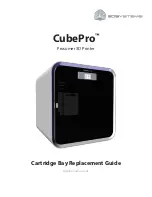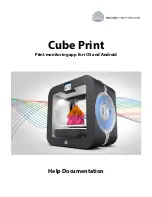
SENTRY User’s Guide
Introduction - 1
Fitzgerald & Long
USING THIS GUIDE
The SENTRY User's Guide is comprehensive in its descriptions of all of SENTRY's menus, data entry
screens and reports. The Guide follows the same structure as the SENTRY menu system.
There are four major sections in SENTRY. These are:
1. Database Creation and Validation
2. Database Maintenance
3. Reports
4. Utilities
Additionally, there is an introductory section and a number of appendices. The introduction includes an
overview of the User’s Guide, a description of conventions used throughout the SENTRY screens,
installation instructions and suggestions on getting started.
Note that each menu selection has a number to its left indicating the selection number from the Main Menu.
For example, the
Database Maintenance Menu
is preceded by the number "
2
", indicating that it is
the second selection from the Main Menu. The
User Maintenance
program documentation has the
section number 2.2 in it's title. This references the second program,
User Maintenance
, in the second
section,
Database Maintenance
.
The Guide uses several notation conventions for the sake of easy reading and conciseness. These include:
<RETURN>
This figure indicates that the return key, sometimes called NEW LINE or ENTER, should
be pressed. This is one key stroke.
<ESC>
This figure is used to indicate the escape key. Most keyboards have a key labeled "ESC".
The use of the escape key is ALWAYS followed by <RETURN>. SENTRY uses this key
to allow an abort or escape from any program. All data remains as it were prior to the
aborted session. Please note that this function may be assigned to another key if desired.
See Appendix 2 for details on creating new key bindings.
" " (quotes)
The SENTRY User's Guide frequently uses double quotation marks to set off the
characters you should enter. NEVER type the quotes!
TCL
T
erminal
C
ontrol
L
anguage. SENTRY will function equally well on any of the UNIX-
based database environments, including uniVerse, UniData and PI/open. Since each
environment uses its own naming conventions we have used the generic term “
TCL
” to
indicate the command prompt for whichever environment you are using. For UniData and
Summary of Contents for Sentry
Page 4: ......
Page 18: ......
Page 21: ...SENTRY User s Guide Section 1 3 Fitzgerald Long ...
Page 29: ...SENTRY User s Guide Section 1 11 Fitzgerald Long ...
Page 30: ......
Page 60: ...Section 2 30 SENTRY User s Guide Fitzgerald Long ...
Page 102: ......
Page 109: ...SENTRY User s Guide Appendix 1 7 Fitzgerald Long ...
Page 110: ......
Page 113: ...SENTRY User s Guide Appendix 2 3 Fitzgerald Long ...






































